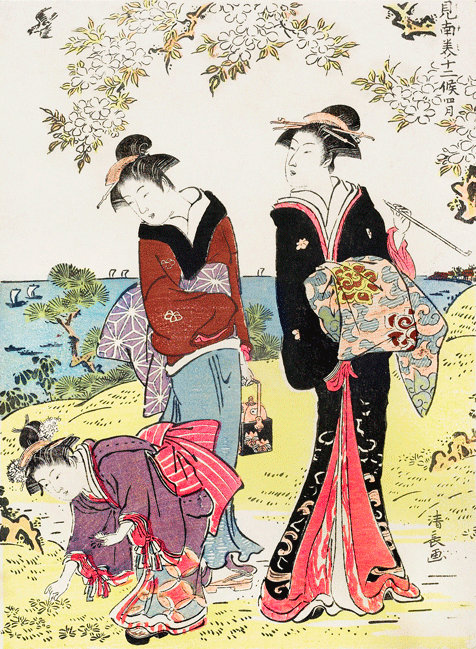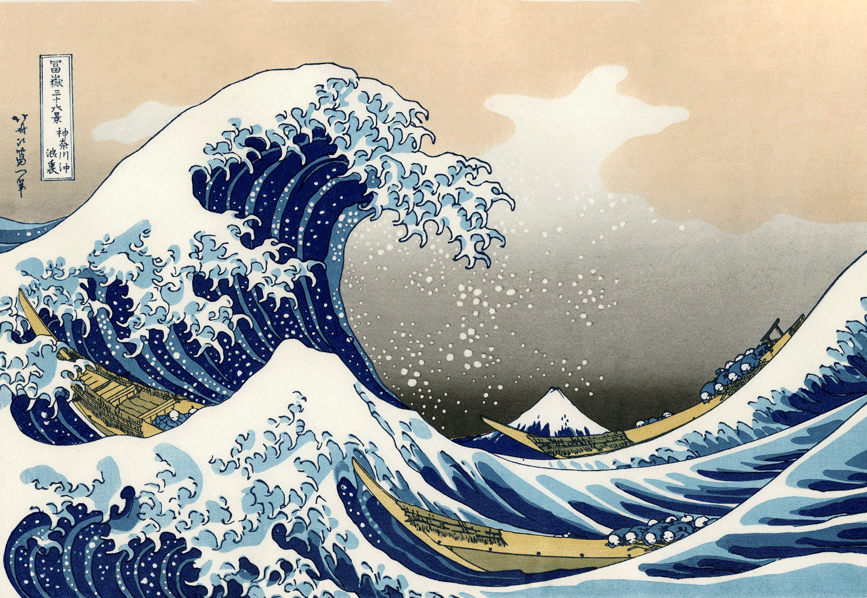In the fast-paced world of artists and innovators, the significance of old printing techniques has come forward to largely influence contemporary design. Our new generation constantly thrives on progression with creativity, attempting to chase inspiration from traditional means to craft pop culture aesthetics of their own. Ukiyo-e, the Japanese art of woodblock printing, is one strong influence for these millennials that has remained in trend as a past-future philosophical genre in arts and design. With its peculiar process and eloquent elements, ukiyo-e presents itself as a valuable edge to two of the United Nations Sustainable Development Goals which are Reduced Inequalities and Sustainable Cities and Communities.
Ukiyo-e, meaning “the floating world,” dates back to the Edo period that flourished from the 17th to the 19th centuries. This is a technique of woodblock prints and paintings with bold and flat but well-defined lines. The concept of the expression of “the floating world” is a depiction of ephemeral pleasures of life with subjects such as female beauties, courtesans, kabuki actors and alike. The folk tales of nature and landscapes were carved with intricacy and balance to showcase the transience of life.

In the early Edo period, paintings and prints were expensive and were only produced for wealthy samurai warriors and higher-ranking officials. However, ukiyo-e was made with the collaboration of four people: the artist, the block cutter, the printer and the publisher. These woodblock prints were mass-produced by hand and were cheap that could be afforded by a larger audience. The availability of intriguing ukiyo-e prints and paintings reduced inequalities at work and among people who enjoyed the art form, making it more popular across nations.
It is interesting how art and design have evolved among millennials in their way of experimenting with the past art genre. The way new digital art stems from ukiyo-e displays sustainable means that are being followed from the past. It suggests that these aesthetics are taken from vintage practices in order to create more quintessential forms of digital design trends.
At the heart of this Japanese art lies minimalism. By giving value to simplicity, solid designs and flat lines, these prints had strong codes of harmony and balance. Its proportionate colors and patterns represented respect for the surroundings and its fleeting nature. The idea of working with fewer elements of distinct importance reverberates the deep-rooted feeling of nostalgia and loneliness among the people. The reflections of “the floating world” produced by different artists and craftsmen were their versions of feeling lost in a world that is so complex.

“Living only for the moment, turning our full attention to the pleasures of the moon, the snow, the cherry blossoms and the maple leaves; singing songs, drinking wine, diverting ourselves in just floating, floating; refusing to be disheartened, like a gourd floating along with the river current: this is what we call the floating world,” writes Asai Ryoi.
The ukiyo-e designs were asymmetrical compositions of erotica and natural landscapes and the ephemeral beauty of moments that could not be recreated. These prints were usually less in detail as they allowed the design the space to breathe in calmness. Guided by this movement, Gen Z reconfigured the design world of video games and graphic designs by keeping some elements from ukiyo-e. This inspired New Aesthetic can be seen in glitch patterns and neon colors with explicit shapes and effects. In the current day, digital artists are to be seen capturing mass attention with graphics that play with human senses with sharp color schemes and bold lines. Such visuals are more prescriptive and clearly a relaunch of the ancient Japanese techniques.
The modern digital world forms an endless space of neon-shaded, sonic illustrations where video games, lo-fi music and vaporwave are some designs that depict futurism as narratives. The concept from ukiyo-e and the development of an unrealistic future in these designs shadows nostalgia and melancholy. These emotions arise out of loneliness and in the hope of reviving the past to hold them close for future innovations. These modern aesthetics among innovators implies how vital the archive of art is. The contemporary designs in the digital world reflect the need for preservation for sustainability for the generations to come and redesign.
Now, the influence of Ukiyo-e art has been there for centuries and you can also access to learn more here.
